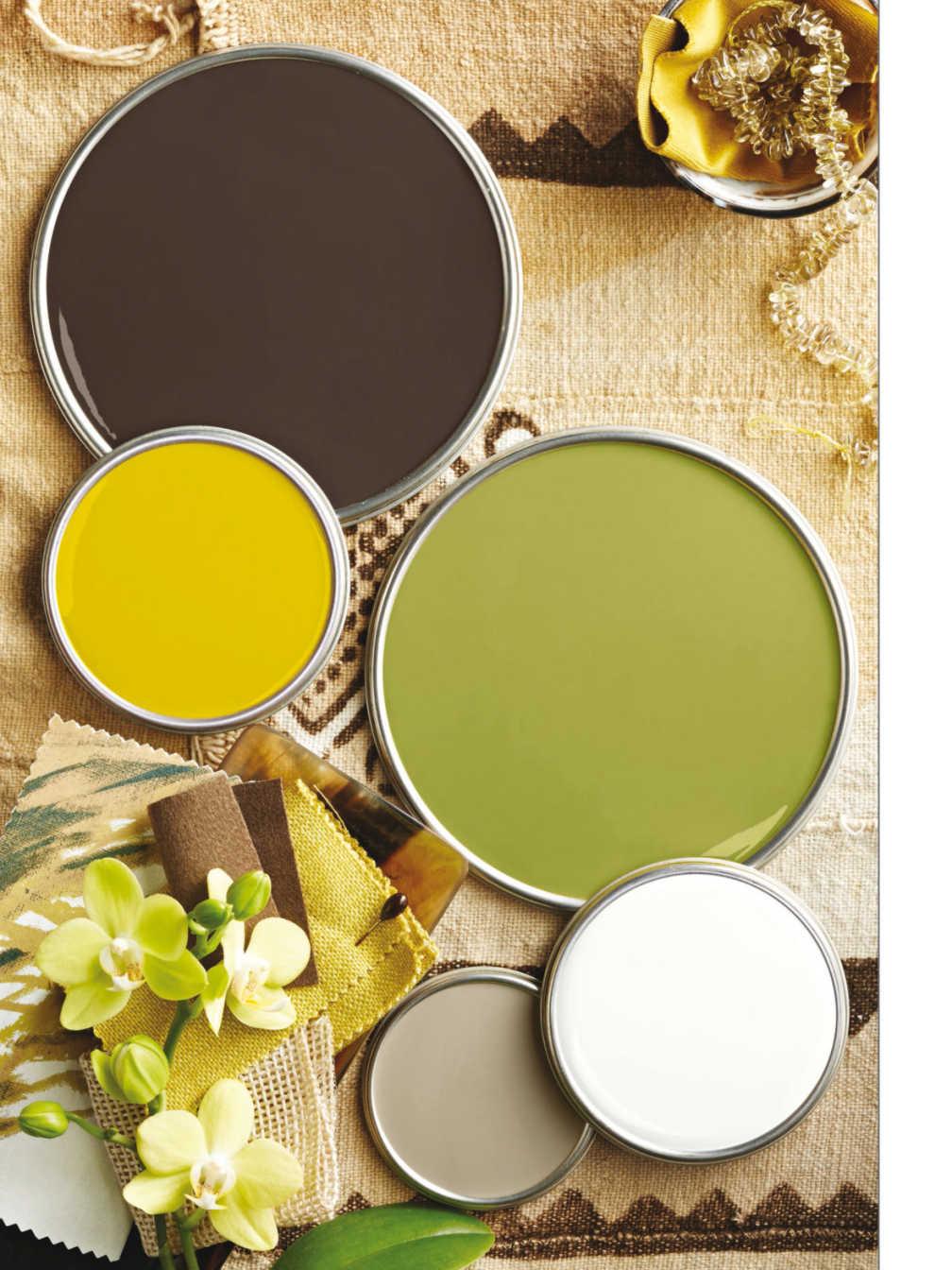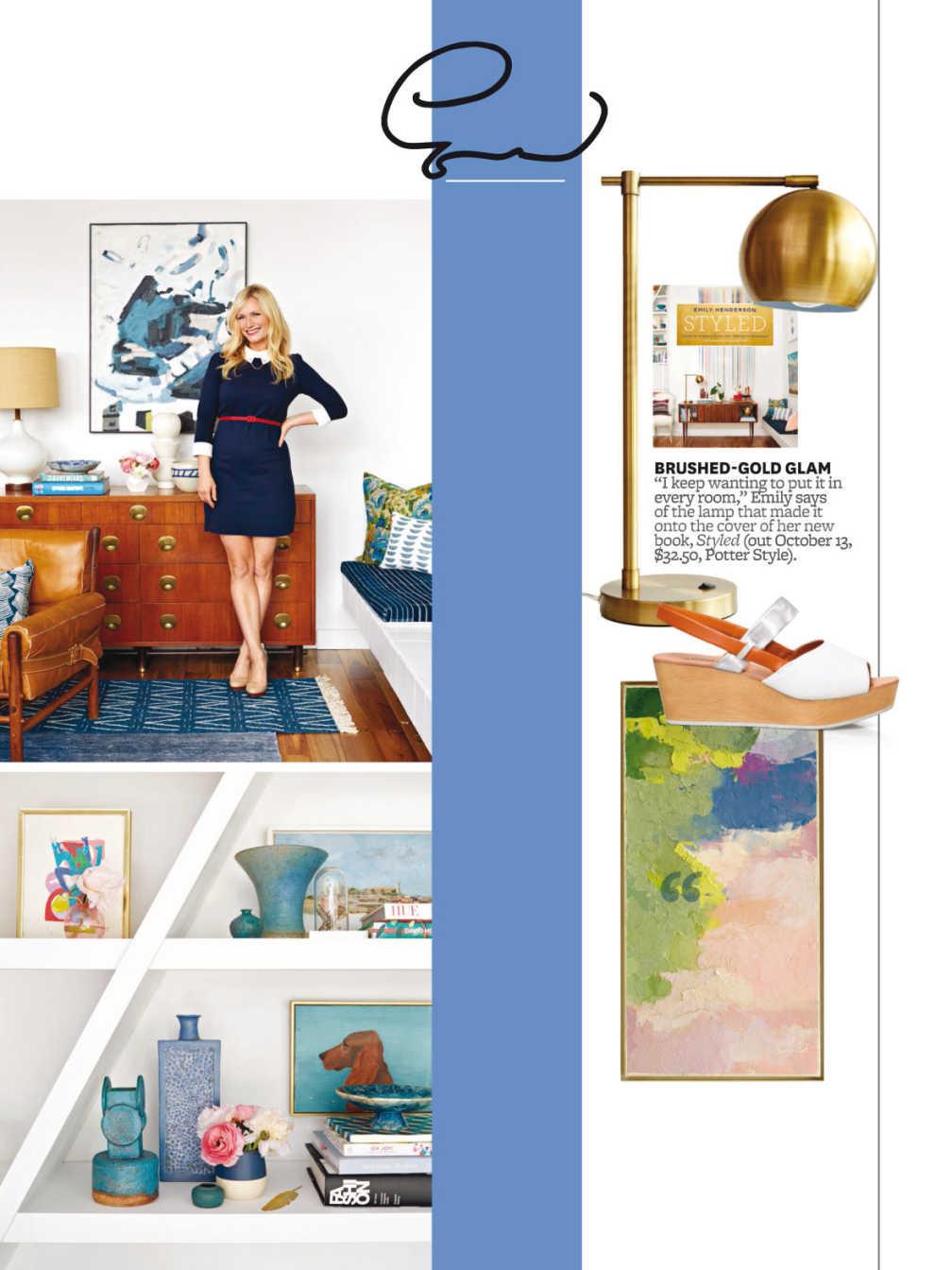
2 minute read
SUYSEL DePEDRO MAXWELL FOSTER
MIXING & MATCHING Since starting New York design firm Tilton Fenwick in 2010, Anne and Suysel have become pattern junkies. “We rarely use just one fabric on any item. We love mixing it up with different fabric for the trim, fringe, or border. It’s our signature detail,” Suysel says. Their passion for pattern took this seemingly hopeless $1 Craigslist chaise longue and turned it into a statement piece. The design duo give us their secrets to combining patterns so you can give your thrift shop misfits and forgotten-about attic finds a new life.
TIE IT IN The same floral fabric from the chaise dresses up the inside of a bookcase and trims the lampshade.
Advertisement
1 1 2
3
PATTERN BY NUMBERS Three fabrics from Tilton Fenwick’s Duralee collection and a creamy neutral paint joined forces in the overhaul. 1. Rocat : “We pieced together the main print so that it essentially acts as two separate fabrics,” Anne says. “The fl oral is on the cushion and the inside of the back. Then we cut a strip from the overall pattern and used that for the border design on the thickness of the cushion.” 2. Lenox: The tiny allover fl oral print was used for the welt and tufted buttons. 3. Quintessence: The woven striped fabric is used on a bias around the back of the piece. Paint: A fresh coat of Whispering Spring (Benjamin Moore) refreshes the legs.
BLUE & GREEN SCHEME “If you mix a variety of small- and big-scale patterns while keeping within the same color palette, the look reads cohesive,” Anne says. Here, a blue and green palette melds the three fabrics without overwhelming. Q
Get tips and tricks for making every room healthier from Robin’s book, Clean Design ($22.95; Greenleaf Book Group Press).
queen of clean
Eco-friendly lifestyle expert and designer Robin Wilson shares her tips for a bedroom that’s cozy and stylish—and healthy.
by natalie mcilwain
SIMPLIFY WINDOW TREATMENTS Heavy draperies or curtains that are a hassle to clean are major dust collectors in the bedroom. Instead, try side panel curtains made of linen or cotton, or shutters, blinds, or pull-down shades made of natural materials. “Overall, the key is simplicity and ease of washing,” Robin says.
SPLURGE ON BEDDING “In bedrooms, it is more important than in any other room to use eco-friendly, allergyfriendly bedding and fabrics, even if it costs more,” Robin says. Cotton is her top pick for comfort and durability. And wash regularly. Robin recommends washing sheets, pillowcases, and blankets in water heated to at least 130°F on a weekly basis.
CORRAL THE CLUTTER Knickknacks are dust magnets. Keep dresser tops and bedside tables clutter-free and easy to clean. Store belongings in covered boxes, bins, drawers, cabinets, or bookcases with doors. And don’t forget the closets. “Clean closets twice a year by removing everything, cleaning thoroughly, mopping or steam cleaning the floor, and putting back only what you really need,” Robin says. Keep clothing that is not worn frequently in zippered bags. Q
better homes and gardens | september 2015 | bhg.com













